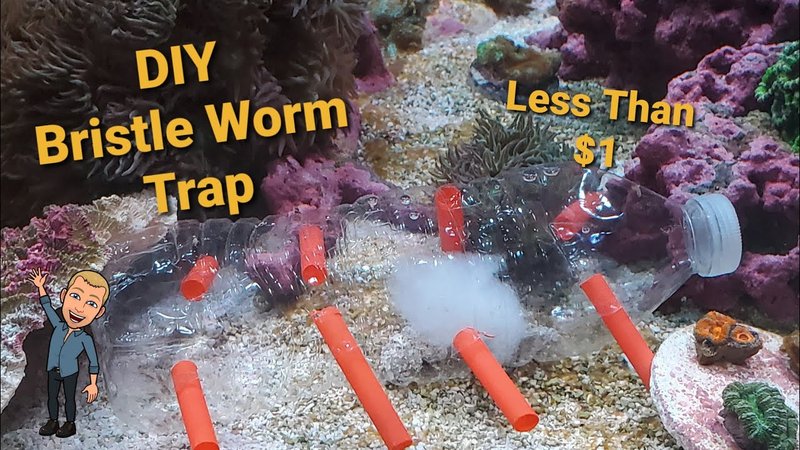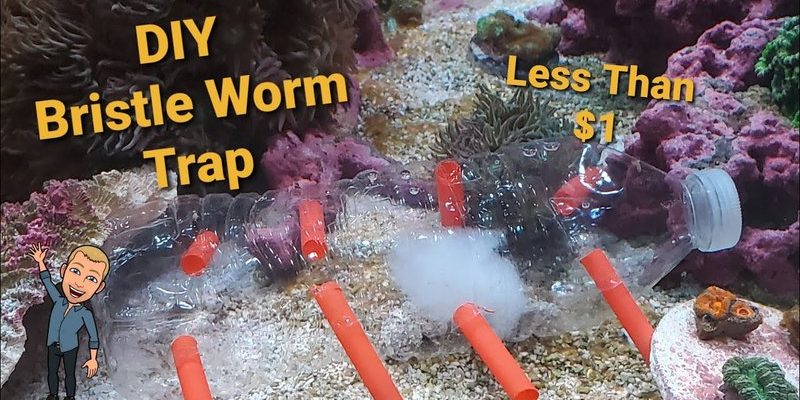
Creating your own traps can be both fun and effective. It’s like crafting your own little pest-control army, designed to target just the bristle worms while leaving the rest of your aquatic life unharmed. Let’s dive into some practical and safe methods to keep these critters under control.
Understanding Bristle Worms: The Good and the Bad
Before we jump into the DIY methods, it’s vital to understand what bristle worms are and why they can be both beneficial and problematic. Bristle worms are segmented worms often found in marine environments. They have a variety of species, some of which are harmless and even helpful in maintaining tank health. However, there are those that can overpopulate and impact your tank’s ecosystem negatively.
You might be wondering how to tell the difference. Good bristle worms are usually smaller and less aggressive. The problematic ones tend to be larger and can consume live corals and other desirable marine life. When their population grows, it can lead to a significant imbalance in your tank, which might leave you scurrying for solutions.
Knowing what you’re dealing with is half the battle. Once you understand the difference, it’s easier to create traps designed to target the unwanted species.
Crafting Simple Bottle Traps
One of the easiest DIY traps you can make is a simple bottle trap. You don’t need fancy materials; a plastic bottle will do the trick. Here’s how to create one:
1. **Choose Your Bottle:** Pick a plastic bottle, like an empty soda or water bottle.
2. **Cut the Bottle:** Cut the top third off the bottle. You want the opening to be wider. This is where the worms will enter.
3. **Invert the Top:** Take the top part and flip it upside down into the base of the bottle. This creates a funnel that lets the worms in but makes it hard for them to escape.
4. **Add Bait:** Put something that bristle worms love inside, like dried fish or shrimp. They’re attracted to the smell and will crawl in for a feast.
Once it’s set up, place it in your tank during the night. Check it in the morning—chances are, you’ll find some unwelcome guests trapped inside!
Using a Glass Jar Trap
If you have an old glass jar lying around, it can work wonders too. Glass offers a clear view of your catch and is durable enough to withstand water. Here’s how to set it up:
1. **Select Your Jar:** A medium-sized jar should work fine. Just make sure it’s clean and free of any residues.
2. **Drill Small Holes:** Use a drill to make small holes near the top of the jar. This allows excess water to escape but keeps the worms in.
3. **Add Bait:** Similar to the bottle trap, put in some bait. You might even consider adding a bit of dead plant matter to catch their attention.
4. **Submerge the Jar:** Place the jar in your tank, ensuring it’s submerged but leaves the top exposed. This way, the bristle worms can enter easily.
The next morning, just pull it out and dispose of any captured worms. You’ll be amazed at how effective this simple trap can be!
Creating a DIY Mesh Trap
If you’re feeling a bit more adventurous, you might try making a mesh trap. This method is a bit more involved but offers excellent results. You’ll need some mesh material, a plastic container, and some basic tools.
1. **Gather Materials:** You’ll need mesh fabric, a plastic container, scissors, and tape.
2. **Cut the Mesh:** Cut a piece of mesh that’s large enough to cover the opening of the container.
3. **Attach the Mesh:** Secure the mesh over the top of the container using tape. Make sure it’s tight to prevent worms from escaping.
4. **Bait the Trap:** Add bait at the bottom of the container.
The worms will be attracted to the bait and crawl through the mesh, but they’ll have a tough time getting back out. Leave it in your tank overnight for the best results.
Monitoring and Maintenance: Keeping Your Tank Healthy
Once you set traps in your aquarium, regular monitoring is key. Check your traps frequently to remove captured worms and replace the bait as needed. This helps to keep the traps effective and your aquarium clean.
At the same time, observe your tank for any changes. If you notice a significant drop in your bristle worm population, great! It means your traps are working. But if you see new ones popping up, it might be time to adjust your bait or try a different trap method.
Keeping your aquarium balanced is essential for the health of all its inhabitants. Regularly maintaining it not only helps you keep pests away but also ensures a thriving environment for your fish and plants.
Using Natural Deterrents
While traps are a great method, you might also consider using natural deterrents in conjunction with your DIY efforts. Some fish and invertebrates, like wrasses and certain types of shrimp, are known to naturally prey on bristle worms. Adding these to your aquarium can help keep their numbers down without needing to rely solely on traps.
Additionally, you might want to evaluate your feeding habits. Overfeeding can lead to excess organic matter, which attracts bristle worms. By feeding your fish and invertebrates the right amount, you can help maintain a balanced ecosystem that discourages bristle worms from thriving.
Wrapping Up: Safe and Effective Bristle Worm Control
Dealing with bristle worms can feel overwhelming, but with a little creativity and knowledge, you can manage their population safely. DIY traps offer a great way to keep your aquarium healthy without introducing chemicals that could harm other marine life.
So, gather your materials, roll up your sleeves, and start crafting some traps! Remember, it’s not just about getting rid of the pests—it’s about keeping your entire ecosystem balanced and harmonious. Happy trapping!

